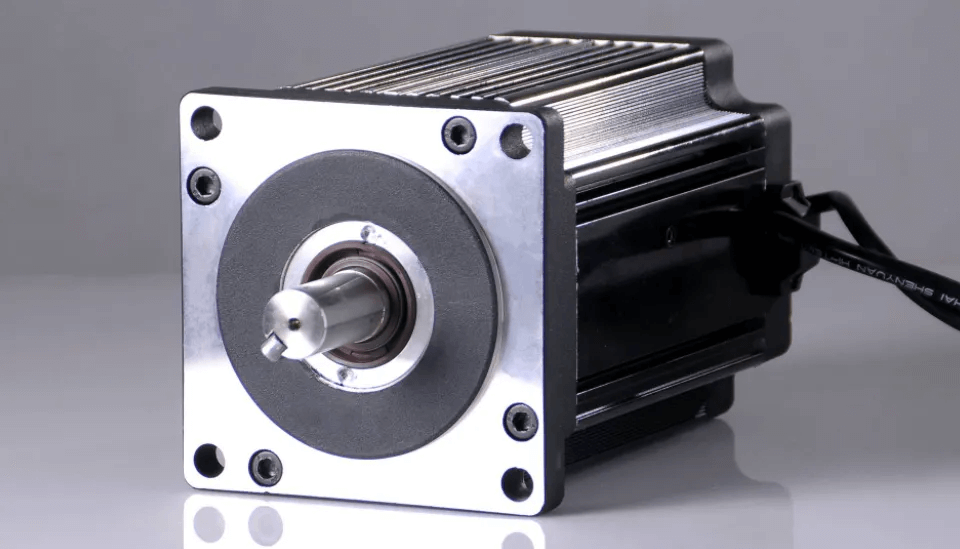How to set the subdivision of Stepper motor driver
1. Set the fine fraction of the stepper driver, usually the higher the fine fraction, the higher the control resolution. But the fine fraction is too high affects the feed rate.
Generally speaking, for mold machine users can consider the pulse equivalent to 0.001mm / P (at this time the feed rate of 9600mm / min) or 0.0005mm / P (at this time the feed rate of 4800mm / min); for users who do not require high precision, the pulse equivalent can be set larger, such as 0.002mm / P (at this time the feed rate of 19200mm / min) or 0.005mm / P (at this time the feed rate of 19200mm / min) or 0.005mm / P (at this time the feed rate of 19200mm / min). min) or 0.005mm/P (when the feed speed is 48000mm/min).
For two-phase stepper motor, the pulse equivalent is calculated as follows: Pulse equivalent = screw pitch ÷ fine fraction ÷ 200.
2. Jump speed: This parameter corresponds to the jump frequency of the stepper motor. The so-called jump frequency is the stepper motor without acceleration, can directly start working frequency. Reasonable selection of this parameter can improve processing efficiency, and can avoid the stepper motor motion characteristics of the low-speed section; but if the parameter is selected large, it will cause bogging, so be sure to leave a margin.
In the factory parameters of the motor, generally contains the jump frequency parameters. However, after the machine is assembled, the value may change and generally has to drop, especially when doing motion with load. Therefore, the setting parameter is determined by the actual measurement after referring to the factory parameters of the motor.
3. Single-axis acceleration: to describe the acceleration and deceleration capacity of a single feed axis, the unit is mm / s square. This indicator is determined by the physical characteristics of the machine tool, such as the mass of the moving part, the torque of the feed motor, resistance, cutting load, etc.. The larger this value is, the less time is spent in the acceleration and deceleration process during the motion and the more efficient it is.
Usually, the value is between 100 ~ 500 for stepper motors and can be set between 400 ~ 1200 for servo motor systems. In the setting process, start setting a small amount, run for a period of time, repeat the various typical movements, pay attention, and if there are no abnormalities, then gradually increase. If abnormal conditions are found, reduce the value and leave a 50% to 100% insurance margin.
4. Bending acceleration: used to describe the acceleration and deceleration capability of multiple feed axes when linked, the unit is mm / s square. It determines the speed of the machine tool when doing circular motion. The larger this value, the greater the allowable speed of the machine tool when doing circular motion. Usually, for machine tools consisting of stepper motor systems, the value is between 400 and 1000, and for servo motor systems, it can be set between 1000 ~ 5000.
In the case of heavy machine tools, the value should be smaller. In the process of setting, start setting a little smaller, run for a period of time, repeat to do a variety of typical linkage movement, pay attention to observe, if there is no abnormal situation, and then gradually increase. If abnormal conditions are found, then reduce the value and leave a 50% to 100% insurance margin.
Usually take into account the drive capacity of the stepper motor, the friction of mechanical assembly, the mechanical parts of the ability to withstand, you can modify the speed of each axis in the manufacturer’s parameters, the actual use of the machine tool user to limit the speed of the three axes.
5. According to the installation position of the three axis zero sensor, set the manufacturer’s parameters in the return to the mechanical home parameter. When the settings are correct, you can run “Return to mechanical home” in the “Operation” menu. First single axis back, if the direction of movement is correct, then continue to return, otherwise you need to stop, reset the direction of return to mechanical home in the manufacturer’s parameters, until all axes can return to the mechanical home.
6. Set the automatic refueling parameter (set it smaller, such as refueling once in 5 seconds), observe whether the automatic refueling is correct, if it is correct, then set the automatic refueling parameter to the actual required parameter.
7. Whether the electronic gear and pulse equivalent settings match. You can make a mark on any axis of the machine tool, in the software to set the point coordinates for the work of the zero point, with direct input instructions, point or hand wheel and other work to make the axis go a fixed distance, using vernier calipers to measure the actual distance and the software coordinates to show whether the distance is attached.
8. Determine whether there are lost pulses. You can use an intuitive method: use a sharp knife in the workpiece blank point a point, set the point as the work origin, lift the Z axis, and then set the Z axis coordinates to 0; repeatedly make the machine movement, such as empty knife run a typical machining program.




